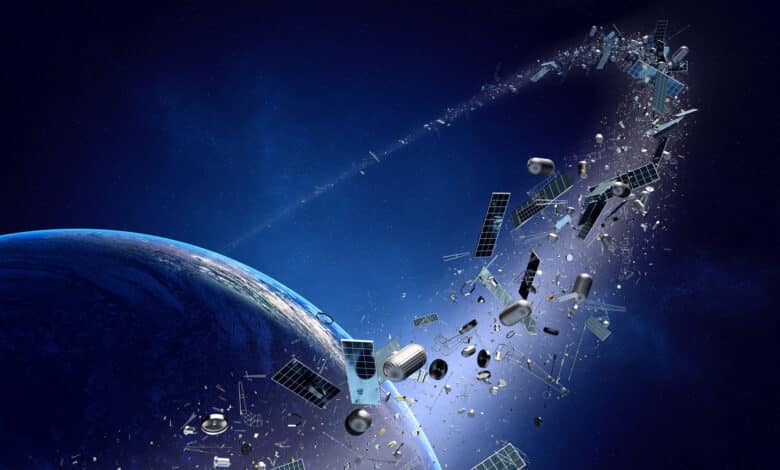
The European Space Agency (ESA) recently issued an alarming warning: The danger from space debris is steadily increasing and could lead to serious problems in the near future. In its latest report from 2024, the ESA highlights the current developments and potential risks posed by the growing amount of debris in Earth orbit.
The most important facts in brief:
- Increase in the amount of space debris: the number of pieces of debris in space is growing every year.
- Danger for satellites and space stations: Collisions could have devastating consequences.
- Measures to avoid debris: ESA calls for international cooperation and new technologies to reduce the amount of debris.
- Long-term risks: Without countermeasures, space could become unusable.
Increase in the amount of space debris
The amount of space debris in Earth’s orbit has increased dramatically in recent decades. This debris consists of old satellites, burnt-out rocket stages and fragments resulting from collisions or explosions.
The latest ESA report shows that the number of pieces of debris is growing exponentially. According to estimates, there are now over 36,500 objects larger than 10 cm in space, plus millions of smaller particles. These pose a significant threat to the operational safety of satellites and spacecraft.
ESA emphasizes danger for satellites and space stations
One of ESA’s biggest concerns is the potential danger that space debris poses to active satellites and space stations. Even small pieces of debris flying through orbit at high speeds of up to 28,000 km/h can cause considerable damage.
A collision with such an object could not only destroy the affected space station or satellite, but also generate further debris, which would lead to a cascade effect. The International Space Station (ISS) and commercial satellites, which are essential for communication, weather forecasting and navigation, are particularly at risk.
Measures to avoid waste
The ESA has proposed several measures to counteract the growing threat of space debris. A key point is international cooperation. Effective strategies to reduce space debris can only be developed and implemented through joint action.
This includes the development of new technologies, such as satellites with integrated mechanisms for deorbiting at the end of their service life or robots that can collect and safely dispose of debris in orbit. ESA is also calling for stricter regulations and guidelines for future missions to minimize the generation of new debris.
Long-term risks
Without effective countermeasures, the increasing amount of space debris could lead to certain orbital regions becoming unusable in the long term. This would not only jeopardize future space missions, but could also significantly affect the infrastructure on which our modern society depends. ESA therefore stresses the urgency of taking immediate action to ensure safety in space and minimize the risk for future generations.
Conclusion
ESA’s latest report highlights the growing danger of space debris and the need for international cooperation and innovative solutions to tackle this problem. As the amount of debris in Earth orbit increases, so do the risks to satellites, space stations and future space missions. Only through joint action and the use of new technologies can safety in space be guaranteed in the long term. ESA’s warning should therefore be seen as an urgent call to action to secure the future of space travel.